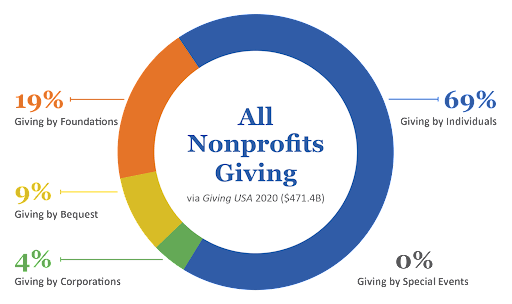Partner with a Nonprofit Firm to Enhance Your Company's Success
Partner with a Nonprofit Firm to Enhance Your Company's Success
Blog Article
Checking Out the Diverse Features and Responsibilities of a Nonprofit Firm in Dealing With Social Issues and Supporting Adjustment
Nonprofit agencies act as important agents of change within society, taking on a myriad of social issues via complex approaches. Their obligations extend beyond mere service arrangement; they involve in campaigning for, source mobilization, and community outreach, frequently functioning as a bridge in between marginalized populations and necessary services. By promoting collaborations and utilizing culturally appropriate methods, these organizations deal with the origin of social challenges. Yet, the intricacies of their duties elevate important questions about performance and sustainability. What are the ramifications of these varied functions on long-lasting neighborhood impact?
Comprehending Nonprofit Firm Duties
The effectiveness of nonprofit firms rests on a clear understanding of their diverse duties within culture. These organizations work as crucial middlemans between the public, private, and governmental fields, attending to numerous social problems and supporting for change. Nonprofit companies commonly operate as company, delivering crucial programs and sources to underserved populations. This function is essential in loading spaces that may exist in civil services, ensuring that at risk groups have access to necessary support.
Additionally, nonprofits play a necessary function in advocacy, elevating recognition and influencing plan decisions that impact their areas. By involving in research and public education and learning, these organizations aid shape public discussion and advertise notified decision-making - nonprofit agency. They also offer as platforms for volunteerism, mobilizing area participants to contribute their time and skills toward cumulative goals
Moreover, nonprofit agencies commonly act as conveners, combining varied stakeholders to cultivate cooperation and collective influence. This joint method enhances their ability to resolve complex social problems efficiently. Comprehending these diverse duties is critical for making the most of the potential of not-for-profit firms in developing lasting social change and boosting total community well-being.
Community Involvement and Outreach
Efficient area interaction and outreach are essential elements of nonprofit agencies' strategies to build and cultivate links trust fund within the neighborhoods they offer. These initiatives concentrate on comprehending area needs, promoting awareness of readily available sources, and encouraging participation in programs created to resolve social problems. Nonprofit companies use a selection of techniques to involve with neighborhood participants, such as workshops, informative sessions, and collaborative occasions.
Outreach efforts serve to strengthen connections with varied populaces, especially marginalized teams that might encounter barriers to gain access to. By making use of culturally appropriate interaction methods and leveraging local collaborations, nonprofits can improve their presence and show their commitment to area empowerment. This strategy not just grows a sense of belonging however likewise raises the chance of sustained involvement.
In addition, reliable neighborhood engagement exceeds mere participation; it includes actively listening to community members' responses and integrating their insights right into program growth. This collective procedure makes sure that the solutions supplied are responsive, relevant, and tailored to the unique difficulties faced by the neighborhood. Eventually, promoting strong links through involvement and outreach can result in more impactful treatments and a better collective effort toward advertising positive social modification.
Campaigning For and Plan Impact
Campaigning for acts as an important device for not-for-profit firms to affect public law and drive systemic modification. By leveraging their proficiency and community understandings, these organizations can effectively represent marginalized populaces and address pushing social problems. Nonprofits take part in advocacy via numerous approaches, including public understanding campaigns, grassroots mobilization, coalition structure, and straight lobbying of policymakers.
With these efforts, not-for-profit agencies intend to shape legislation and policy frameworks that line up with their goal and the demands of the areas they serve. They perform study, collect information, and share engaging stories to highlight the necessity of particular concerns, guaranteeing that decision-makers are notified and inspired to act. This procedure not just enhances the voices of those impacted by social injustices however likewise promotes a more fair and inclusive policymaking environment.
In addition, advocacy initiatives usually seek to create long-lasting structural changes, addressing origin triggers rather than merely alleviating signs and symptoms. By prioritizing policy influence, nonprofit agencies contribute to a more comprehensive understanding of social difficulties and promote remedies that can bring about sustainable improvements in societal from this source well-being. Eventually, campaigning for is essential to the transformative role nonprofits play in developing a just and fair society.
Fundraising and Resource Monitoring
Nonprofit agencies rely on durable fundraising and resource management methods to support their advocacy initiatives and sustain their missions. By why not try here utilizing a multi-faceted approach, nonprofits can reduce the dangers associated with reliance on a single financing source.
Source management is equally essential, as it entails the tactical allotment of both financial and human resources to optimize impact. Nonprofits have to develop budget plans that straighten with their objectives while ensuring openness and liability to stakeholders. This entails regular monitoring of expenses and changing strategies as needed to enhance resource usage.

Cooperation and Partnerships
While lots of companies seek their goals independently, collaboration and collaborations can dramatically improve the performance of nonprofit agencies. By functioning with each other with other nonprofits, federal government entities, and private industry organizations, nonprofits can pool sources, share expertise, and magnify their effect on social problems. Collective efforts usually result in innovative solutions that might not be possible separately, leveraging the staminas of each companion to address intricate difficulties.

Inevitably, efficient cooperation needs clear interaction, shared objectives, and common regard amongst companions. By embracing a participating method, nonprofit companies can develop lasting networks that not just address prompt social concerns yet likewise add to lasting systemic modification, cultivating a more equitable society. Through cooperation, nonprofits can prosper and maximize their possibility for purposeful effect.
Final Thought
Not-for-profit firms work as vital entities in fostering and addressing social concerns modification within communities. Through varied features such as neighborhood engagement, advocacy, and resource monitoring, these organizations efficiently mobilize sources and support for underserved populaces. Their joint initiatives with numerous stakeholders boost the capability to influence public policy and advertise structural modifications. Eventually, the diverse functions of nonprofit agencies substantially add to the quest of social justice and the enhancement of area well-being.
Recognizing these multifaceted functions is critical for maximizing the capacity of nonprofit agencies in developing sustainable social change and enhancing general community wellness.
Reliable area engagement and outreach are fundamental parts of not-for-profit companies' methods to develop and foster links trust within the neighborhoods they serve. By working together with other nonprofits, federal government entities, and exclusive field organizations, nonprofits can pool resources, share know-how, and enhance their impact on social problems.Nonprofit companies serve as crucial entities in addressing social issues and fostering change within neighborhoods - nonprofit agency. Inevitably, the diverse functions of not-for-profit agencies significantly add to the pursuit of social justice and the renovation of area well-being
Report this page